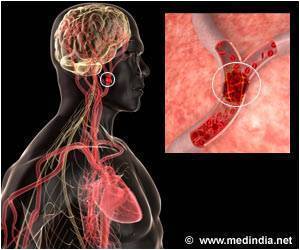The results of a research study presented today at the 80th Annual Scientific Meeting of the American Association of Neurological Surgeons (AANS)

Michael Tso, MD, will present the study results of The Utility of a Screening Protocol for Blunt Cerebrovascular Injury Using Computed Tomographic Angiography, 11:20-11:34 a.m., on Wednesday, April 18. Co-authors are Michael Lee; Parviz Dolati, MD; Corina Tiruta, MSc; Chad Ball, MD; William Morrish, MD; Alim Mitha, MD, MSc; Andrew Kirkpatrick, MD; and John Wong, MD, MSc.
After local multi-disciplinary review, a BCVI screening protocol was developed and implemented on Aug. 1, 2005. The protocol included five major criteria to indicate a recommendation for CTA in trauma patients: severe mechanism associated with facial fracture or diffuse axonal brain injury; near hanging with anoxic brain injury; physical signs of suggestive of serious neck trauma (such as seat belt abrasion); significant basal skull fracture; and cervical fracture affecting the vertebral body or extending into the foramen transversarium. From 2002-2008, trauma patients with an injury severity score (ISS) of at least 12 were identified using a prospective registry, and screened for BCVI over two three-year periods (before /after the screening CTA protocol implementation) via retrospective hospital chart review. BVCI detection rate, stroke rate, and mean modified Rankin scale (mRS) at hospital discharge were compared before and after the protocol implementation using the Fisher exact test and Mann-Whitney U-test.
From the 5,342 trauma patients, 47 (0.9 percent) had cranial or cervical artery dissections, the majority of which (89 percent) were extracranial in location, and the mean age was 38 years (60 percent were male). Nineteen patients (40 percent) had carotid dissections, 27 (57 percent) had vertebral dissections and one (two percent) had both. In comparing the time periods before and after protocol, the number of patients with arterial dissections was nearly identical (23 versus 24, respectively), but those undergoing vascular imaging tests increased by a sizeable amount (129 versus 245, respectively). Before protocol implementation, 57 percent of BCVI patients (12/23) suffered an ischemic stroke, but following implementation, that rate dropped to 29 percent (7/24, p=0.08). All seven of the latter patients had met CTA screening criteria but three did not actually undergo CTA until clinical symptoms later prompted such action. BCVI management included conservative observation in 10 patients, antiplatelet and/or anticoagulation therapy in 34, endovascular intervention in two, and open neurosurgery in two. The mean mRS at hospital discharge before and after protocol implementation was the same (mRS 2.9, p=0.90).
Research findings support that, at this level-one trauma center, a CTA screening protocol for BCVI was effective in detecting early cranial and cervical arterial dissections and was associated with reduced ischemic stroke rates. Those who conducted the study suggest that cooperative multi-center studies be conducted to corroborate these findings.
Advertisement














